Kawasaki W800 World Launch
Motorcycle Test by Adam Child ‘Chad’ – Images by CAPS
Kawasaki’s new W800 Street and Café deliver bags of character and soul, something that’s regularly missed by Japanese manufacturers. We travelled to Japan to test Kawasaki’s new heritage range, which can trace its routes back to the W1 650 of 1965.
The old W800 was loved by many. It was simple and straightforward, which appealed to a generation who remember when bikes had kick-starts. Equally a younger audience enjoyed personalising and modifying the W800 and the older W650.
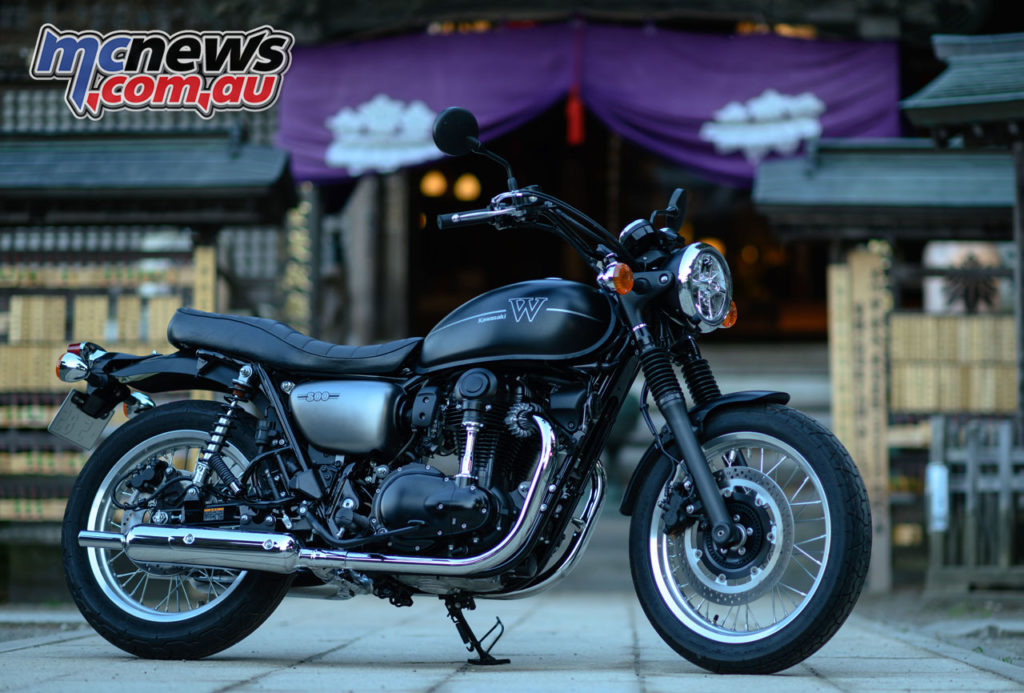
However, the discontinued now ‘old’ W800 was in desperate need of an upgrade, and no longer conformed to tighter Euro-4 legislation. From 2019 Kawasaki have delivered an all-new W800 and there are two variants to choose from, the laid back Street and the racier Café. Although both bikes may appear almost the same as the old model, they are entirely new.
Thankfully Kawasaki haven’t wondered too far from the path of the successful W800, and older W650. In a country led by technology where toilet seats are automatically warmed, they haven’t been tempted to chase horsepower, nor over-complicate a proven recipe. Kawasaki have kept it simple as a retro bike should be.
The 783cc powerplant remains air-cooled and retains the unique bevel gear driven cam, which Kawasaki admit is for cosmetic reason only. They could have opted for water-cooling and even conventional chain driven cams, which would have resulted in more power, but instead have kept with traditional air-cooling.
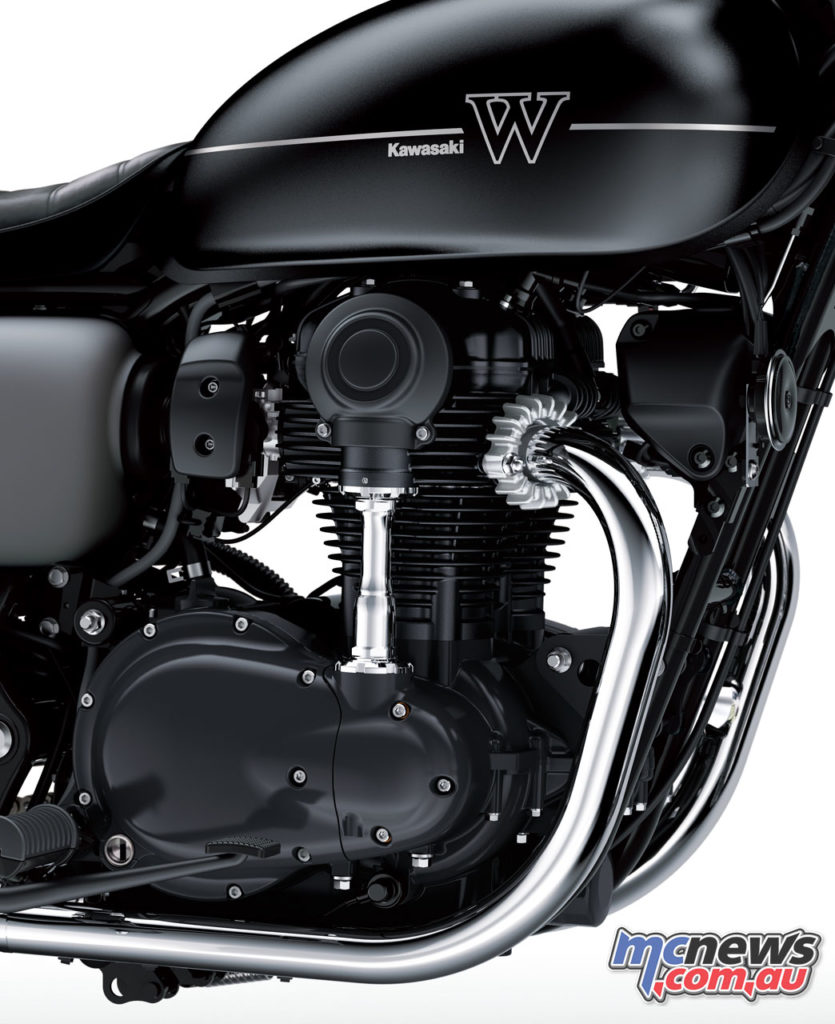
Internally the engine has been upgraded with new pistons, but essentially it’s the same, with a quoted 47 bhp at 6000 rpm which means the new W800 is still A2 compliant.
The steel double cradle chassis is all-new and thicker to improve stiffness. The brakes have received a significant upgrade, the rear shoe brake has been replaced with a more modern disc item, and the front also sees an increase in the single disc diameter, up from 300 mm to 320 mm.
The most significant change to affect the handling is the change in front wheel size, the older 19 in front has been replaced with a 18 in front, matching the rear. The non-adjustable fork has also increased in diameter, up from 39 mm to 41 mm. Kawasaki have tweaked the handing characteristics to improve the responsiveness of the steering, to give the W800 a sportier edge.
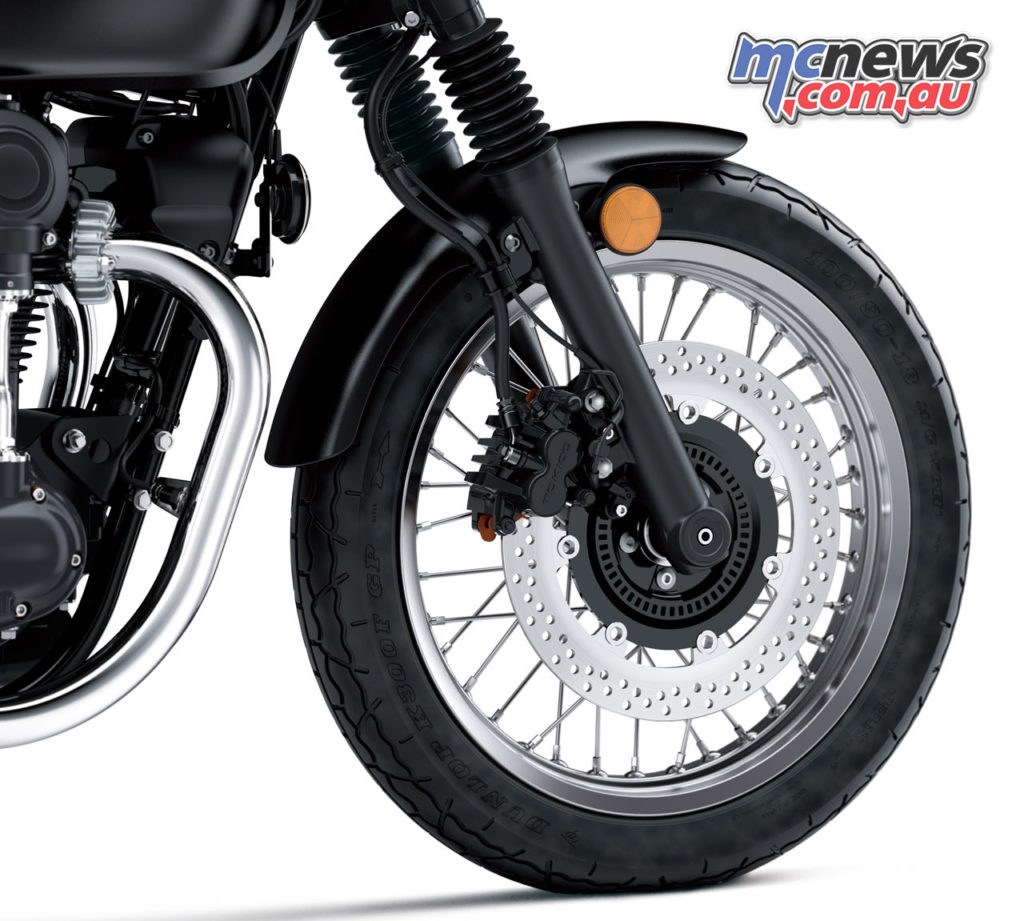
Cosmetically it’s all new. The Japanese built W800 has some lovely detail touches. I love the fact they’ve stayed with the bevel gear drive cams – they’ve gone to that extra effort. The air-cooled engine is a thing of beauty.
The twin swept back exhausts appear to have been stolen from the original Kawasaki 650W, which was launched in 1965 – the first mass production large capacity four-stroke to leave Japan. Everywhere you look there are nice little detail touches, the metal flakes in the metallic paintwork, the ‘old school’ switch gear looks like it’s been taken directly from the ’70s. The seat couldn’t be anymore retro, with the Kawasaki logo printed on the rear.
In Japan on the exclusive product launch, Kawasaki cleverly had an original 1965 W1 on display, which clearly highlighted the similarities between the original and new bike. The family resemblance was obvious.
They both looked like they been produced by the same man, in the same era, only the modern-day bike disc brakes hinted at the new bikes true age. On looks alone Kawasaki need to be applauded. Over the years Japanese manufactures have attempted to build in character and induce some soul but fall short – not this time.
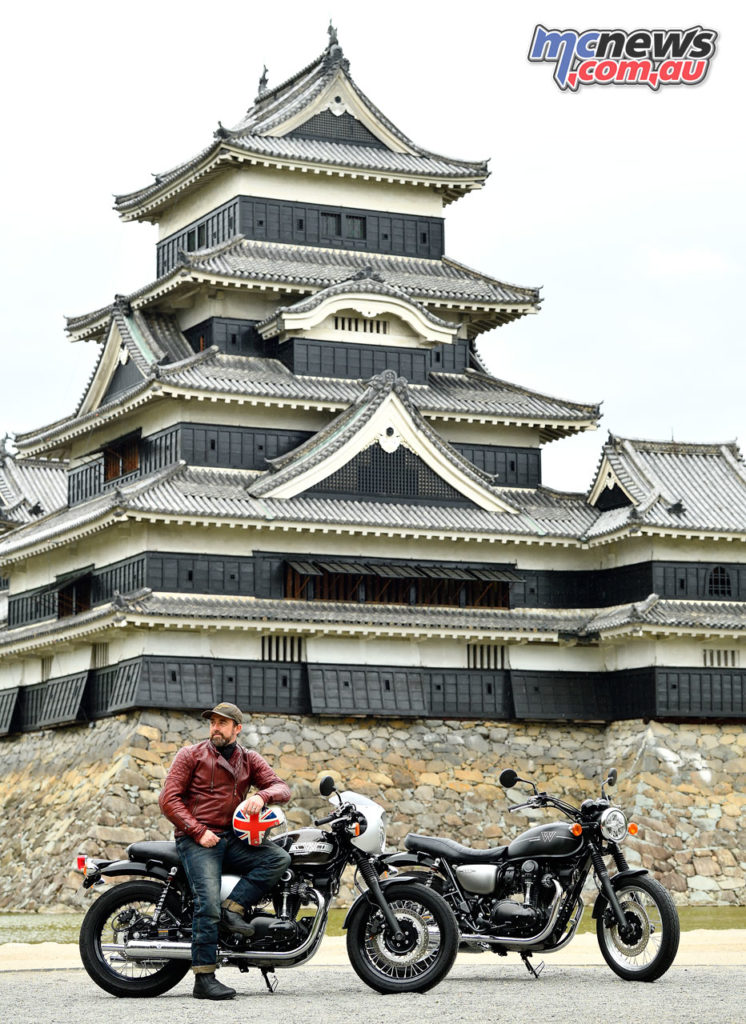
There are two variants to choose from, the Street or the pricier Café. Both share the same basic platform, identical engine, performance, chassis and brakes. The Street is easily identifiable with laid back bars, wide retro seat, chrome spoked rims and small details changes, like a black only bevel cover. The Café comes with racy drop bars, black wheels and engine, plus side tank pads, chrome bevel cover and obviously the front cowl.
Choosing which bike to ride first was the hardest decision of my two-day road test. After a flip of a coin I headed for the laid back Street. The relatively low seat (770 mm) makes the W800 as intimidating as Morris Dancing. I’m 5’7 and was securely flat-footed, while some of the shorter Japanese test riders at even 5’2 didn’t have any issues. The laid back bars, soft seat and wide rubber pegs immediately relax the senses – let’s take it easy.
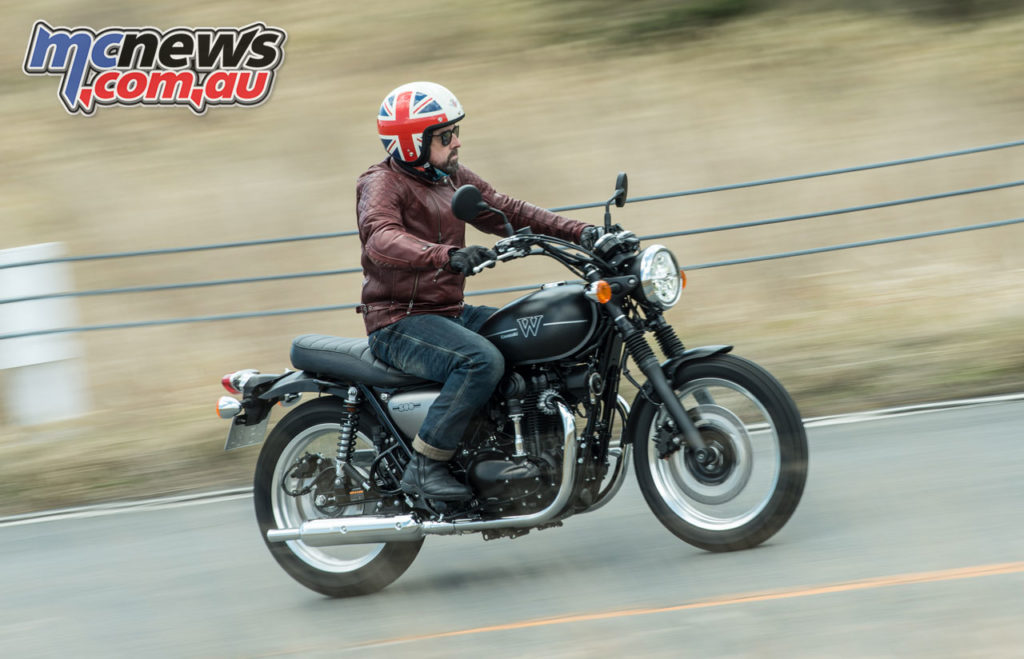
The view from the retro seat is throw-back to the ’70s. I love the simplicity of the switchgear, the ornate clocks are simple with large faces, analogue rev-counter on the right and speedometer on the left. There’s also a small digital display for multiple trips and clock.
The parallel twin, with a long-stoke 360-degree crankshaft starts with a rewarding burble. The twin exhausts sound as good as they look, a blip of the soft throttle results in an authentic exhaust tone and the odd ‘pop’ on the overrun. Kawasaki admittedly spent a huge amount of resources on the exhaust tone.
Obviously it’s Euro 4 compliant, there’s a cleverly hidden cat-converter, but even so they’ve successfully created a charismatic exhaust tone.
Pulling in the one-finger-light clutch with a new back-torque limiter, a neat click into first gear and our Japanese adventure begins.
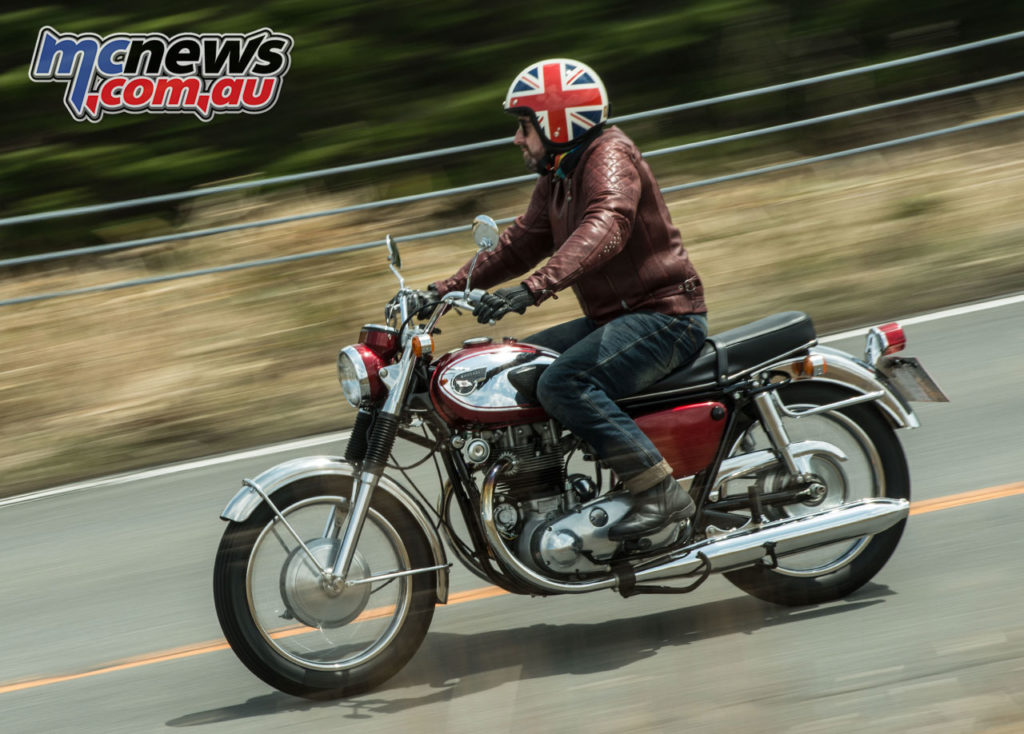
Kawasaki’s new W800 is as effortless and easy ride. You can smoothly change gear at any rpm, even as low as 2000 rpm and then simply short-shift to the national speed limit. The torque is very flat, and the fuelling at low speed is soft, effortless. Once in to fifth gear – top – your left foot can become redundant, the W800 will happily pull from low rpm.
As you can image with only 47 bhp, the air-cooled long-stroke engine could never be described as quick, it’s slow revving and almost lethargic, but it perfectly matches the bikes laid-back feel. If you find yourself constantly revving the W800, then sorry you’ve bought the wrong bike, this is laid back cruising at it’s best.
Cogging back one gear will result in a punch in power. Peak torque is at 4800 rpm but there is more than enough punch from 3000 rpm, which takes care of brisk overtakes with safety.
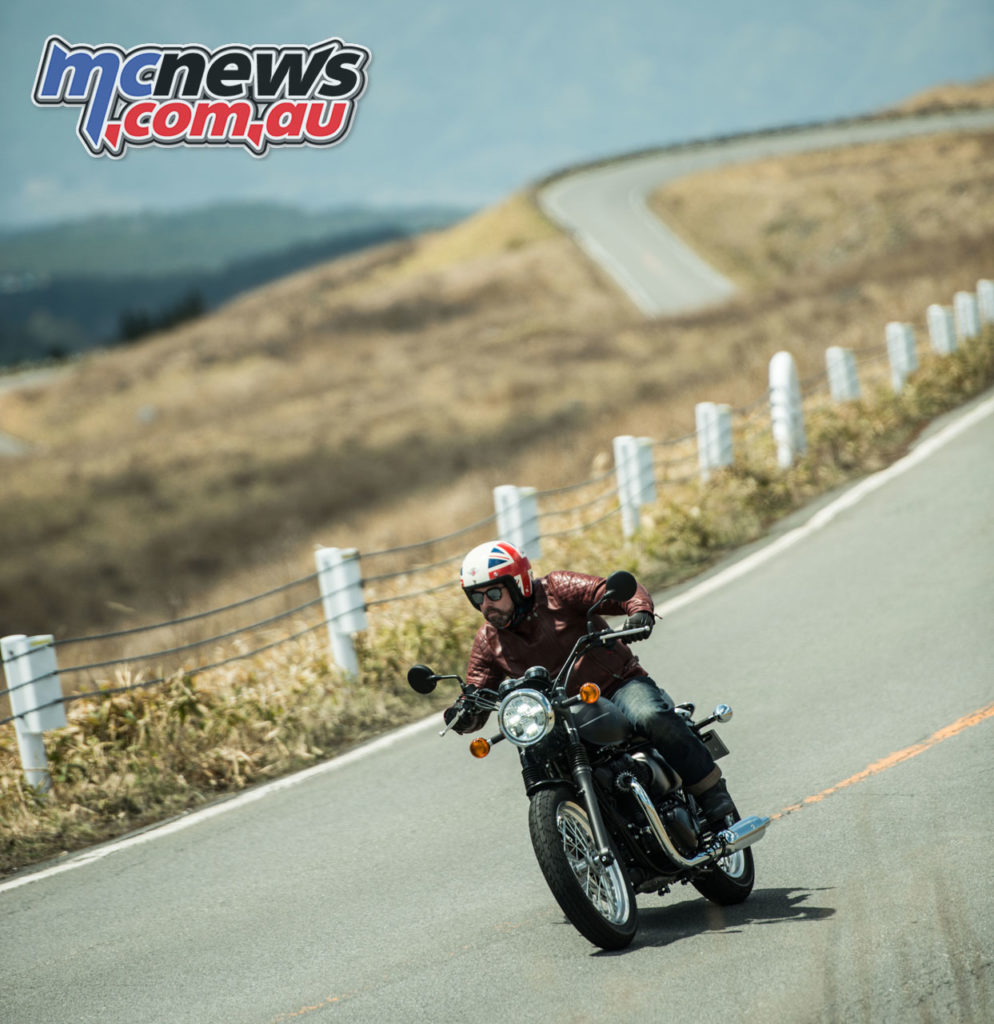
I only wanted more power when exiting slow uphill corners on many of the mountain passes we encountered. The air-cooled donk was more than enough for 90 per cent of the time, squeezing out an indicated 100 mph without too many woes, in fact the punch from 70-80 mph was more than I expected from an A2 licence legal bike.
The handling like the engine is easy, simple and lazy. Kawasaki have quickened the steering over the predecessor, with a smaller front wheel, but you could never describe the W800 as sharp. The wide bars allow you to have some fun in the twisties, you can throw it around with relative ease, but when the foot-pegs start scraping you know you’re having a little too much fun.
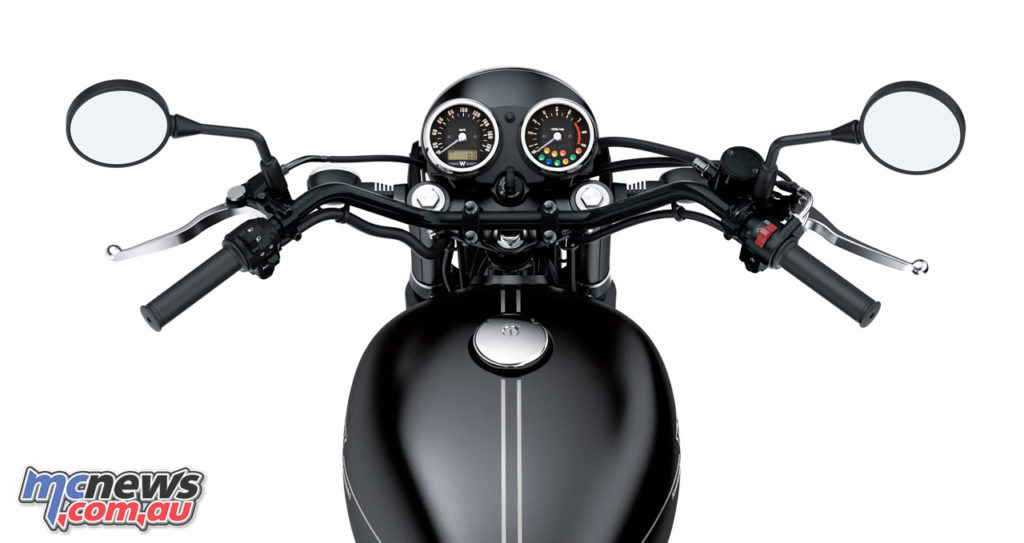
Even when the pegs start to leave trails of sparks, the handling is natural, it doesn’t feel like you’re at the limitations of the W800’s handling. The new suspension is softly sprung, but still has reasonable control and damping. Some roads in Japan were poor in places but the new W800 took imperfections without jolts and jarring, the ride is smooth.
When you ask a little too much of the new ABS assisted brakes, the front forks travel a little more than I’d like, but they don’t dive to the ground like a scared toddler after a car backfires. With a full four-fingered approach the stoppers have some rewarding bite, and the rear disc brake is a big step from the old shoe item.
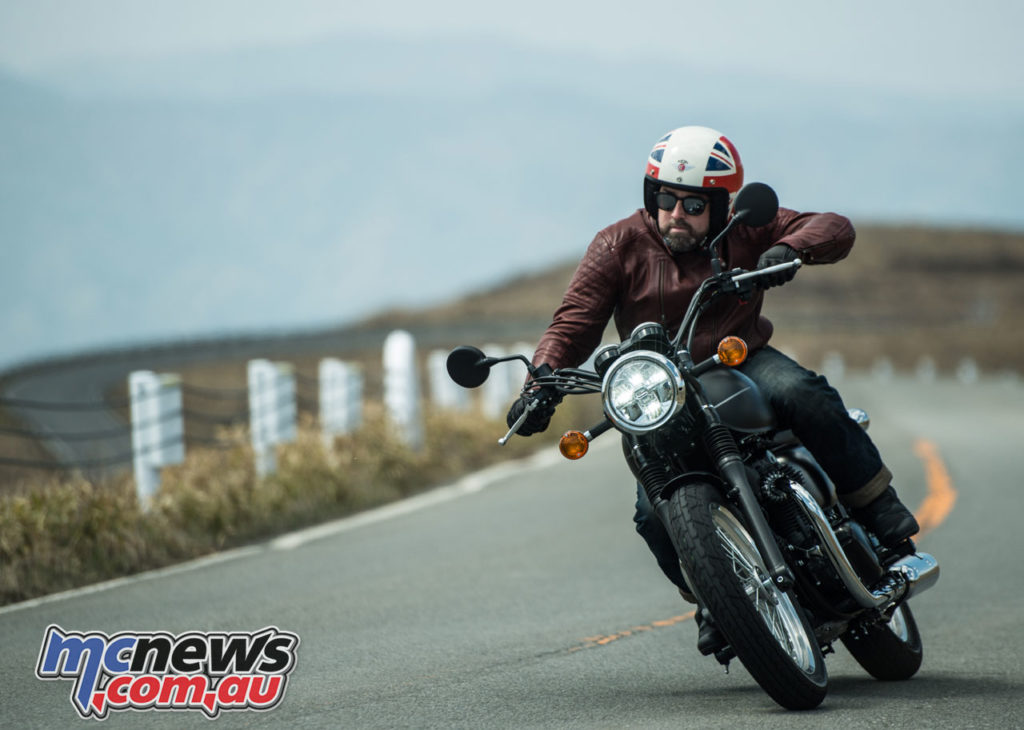
The W800 Café
Despite sharing many similarities with the Street, the Café feels like a very different bike. The seat is taller by 20 mm and firmer. Despite being higher it’s still easy to get two feet securely onto the road, as it’s much narrower than the Streets wider and more comfortable seat.
The Café racer bars dramatically alter your body position, you’re now perched further forward with more weight on your wrists. It’s not as natural as the Street, a tad uncompromising around town, but not uncomfortable.
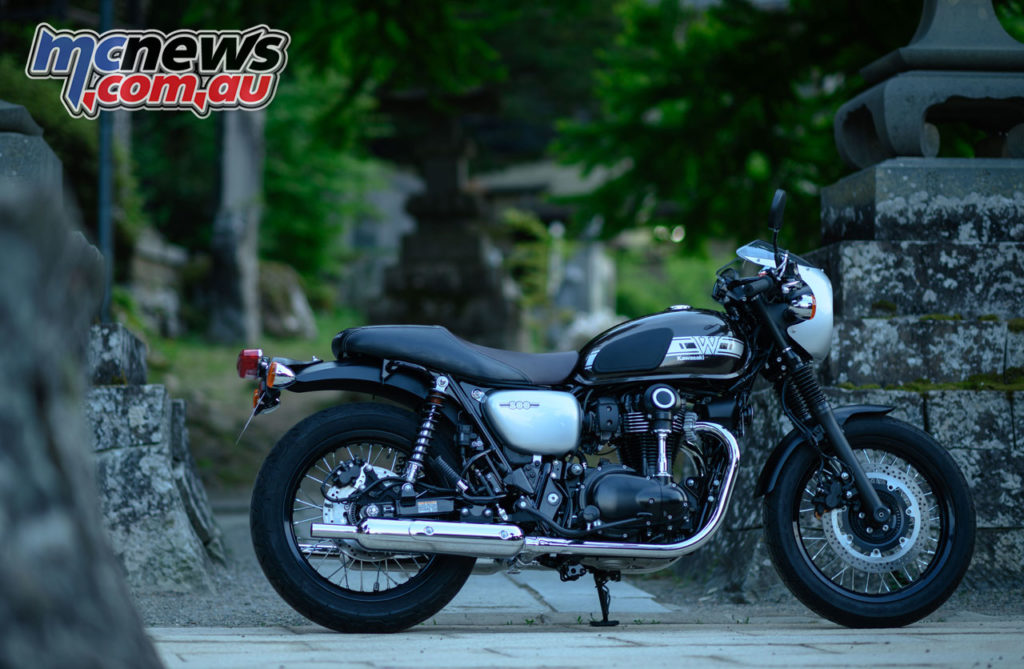
On the open road the Café feels more alive. The aggressive almost racy riding position encourages you to ride a little quicker, hold the revs a little longer and is accompanied by the same charismatic exhaust tone. Once into the mountain region of Kirigamine I preferred the racy Café, despite having the same engine and chassis I was riding a little faster, a little to the annoyance of the Japanese locals who strictly stuck to the speed limit despite being in the middle of nowhere.
But the Café style does come with compromises. The short narrow bars slows down the steering as you simply don’t have the leverage the wide bars give you to throw it into a corner. At high speed it doesn’t feel as stable at the Street, and furthermore as you have more weight over the front, the forks don’t feel as plush, but this may also have been a result of the increased speed.
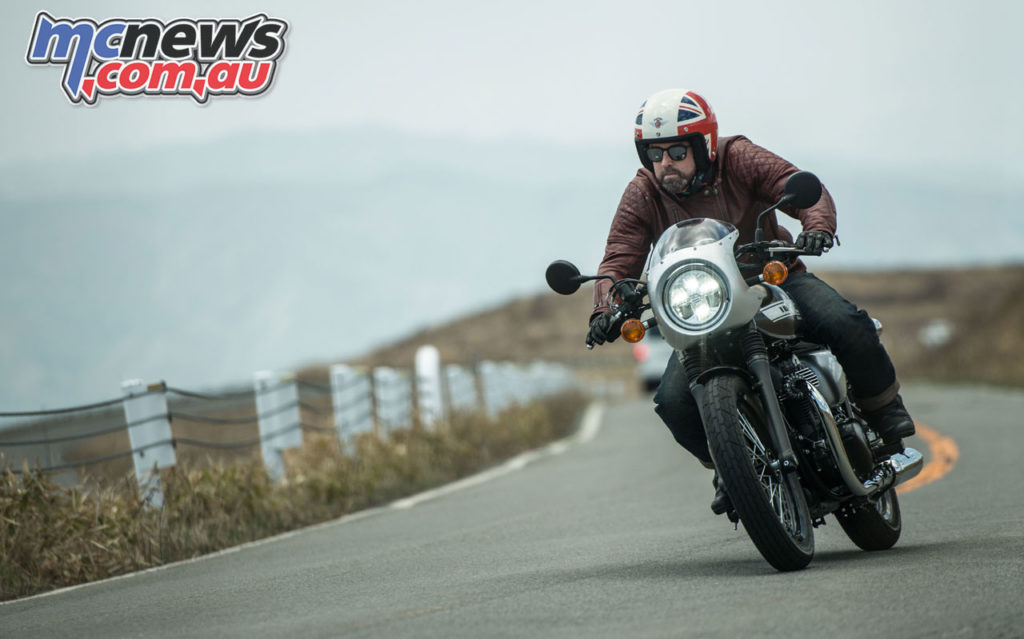
Despite moving the riders’ weight further forward Kawasaki didn’t change the suspension set up between the Café and the Street. And personally, I’d prefer the standard pegs to be further back, racier but not simply the same as the Street.
Of course, arguably the Café is a styling exercise, and hasn’t been led by performance or handing and in terms of appeal and look, the Café hits the nail on the head. The front cowl is a throwback to the café racer culture, but is more for show than any real wind protection.
Personally, I prefer the looks of the Café over the Street, and on day one I did favour the feel of the racer. But after two days and over 300 km of relatively steady Japanese riding, I favoured the Street.
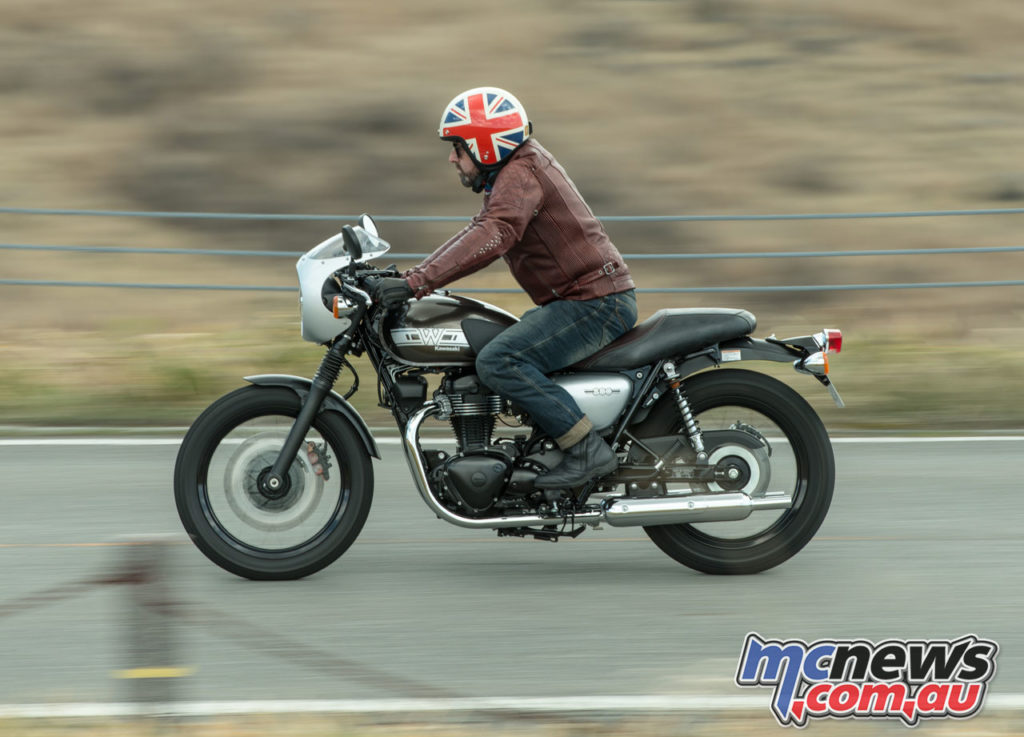
For me the lazy easy handling matches the laid back stance and ride of the Street, it’s the perfect match. And after riding the original 1965 W800 W1, which Kawasaki dragged out of their museum specifically for this event, the new W800 is very much like the original, but with modern technology, better brakes and rideability.
For a short blast to the coast or favourite biker hangout, I’d favour Café, but after two day of touring, I’d choose the Street. And yes, I did say touring. The comfort at legal speeds is exceptional, the ride quality is impressive, I’d certainly take on some serious miles on the Street. This latest model even comes with a larger fuel tank.
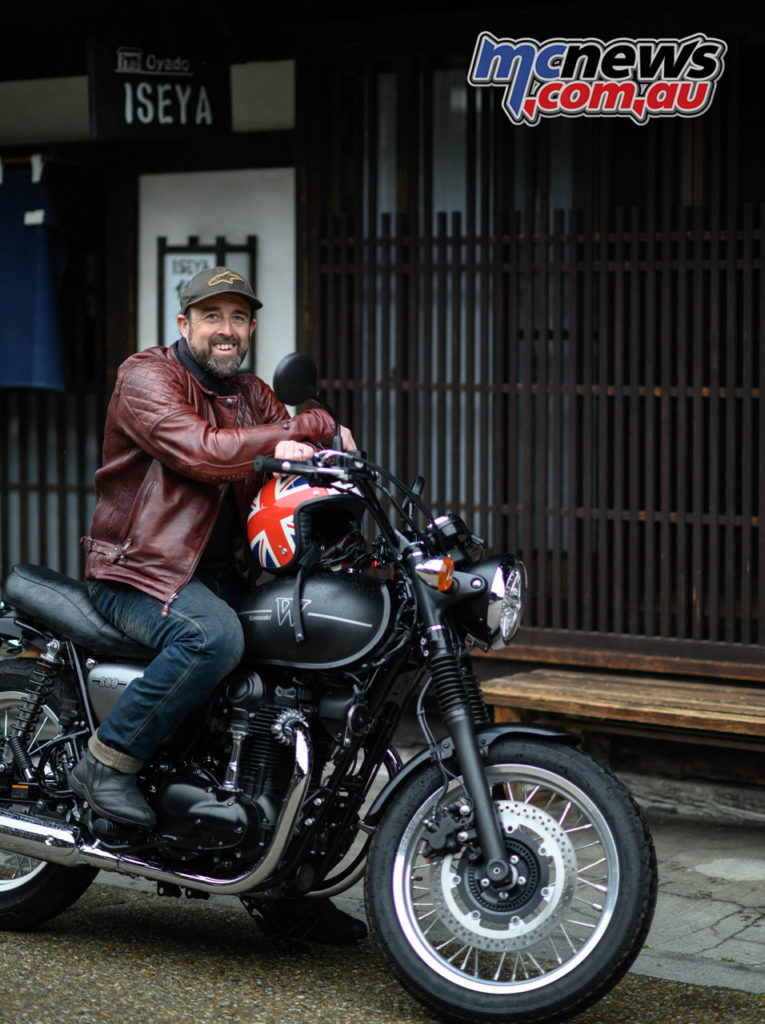
We took on all types of roads and weather, the standard Dunlop K300 surprisingly coping with all conditions. There’s even an optional rear rack and heated grips. At high speeds it’s a little vibey, mainly through the rubber pegs and there’s no economy, range/distance to empty measurement or even a gear position indicator, but otherwise it’s a hard bike to fault.
If you’re looking for a retro easy-to-ride middle-weight machine the market is flooded with attractive choices. Moto Guzzi’s A2 air-cooled V7 is the obvious competition. You could even throw in Harley’s air-cooled 883, Triumph’s water-cooled more powerful Street Twin or Enfield’s new 650 twin, and this is where the Kawasaki stumbles a little as it’s one of the more expensive of the wide selection of middle-weight retro machines.
The W800 Street is available for $12,999 RRP + ORC, while the W800 Cafe is available for $13,999 RRP + ORC. The Royal Enfield Interceptor 650 starts at $9,790 Ride-Away and the Continental GT 650 starts at $9,990 Ride-Away. The Moto Guzzi V7 III Stone in comparison was $14,390 Ride-Away in 2019.
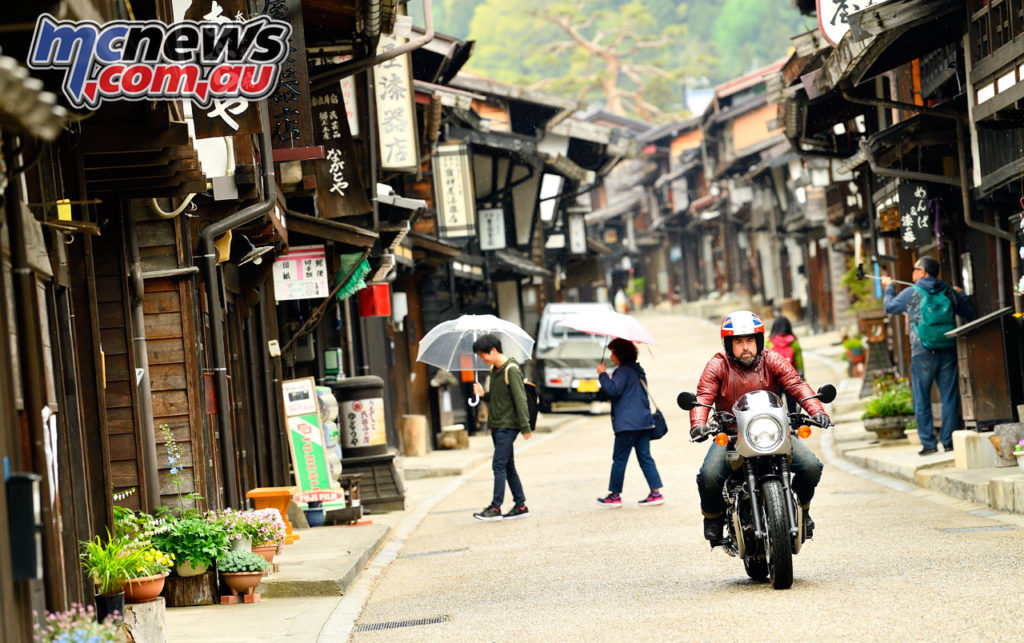
In Kawasaki’s defence, you can see where the money has been spent. The bevel gear driven cam engine, with it’s wide cooling fins is lovely looking, with perfect fuelling. The exhaust has a charismatic tone, the detailing is lovely, the Japanese made Kawasaki feels quality, which arguably justifies the increase in price over the competition.
The W800 Verdict
With over 20-years of professionally testing bikes under my belt, I’ve lost count of the amount of Japanese retro, or cruiser bikes which ride perfectly and look great, but lack character and soul. They simply can’t match the character and soul of similar bikes made in Europe or America. However, the new W800 Street and Café, re-sets that balance. They both have genuine soul, especially the Street which can trace its DNA back to the original W1 from 1965.
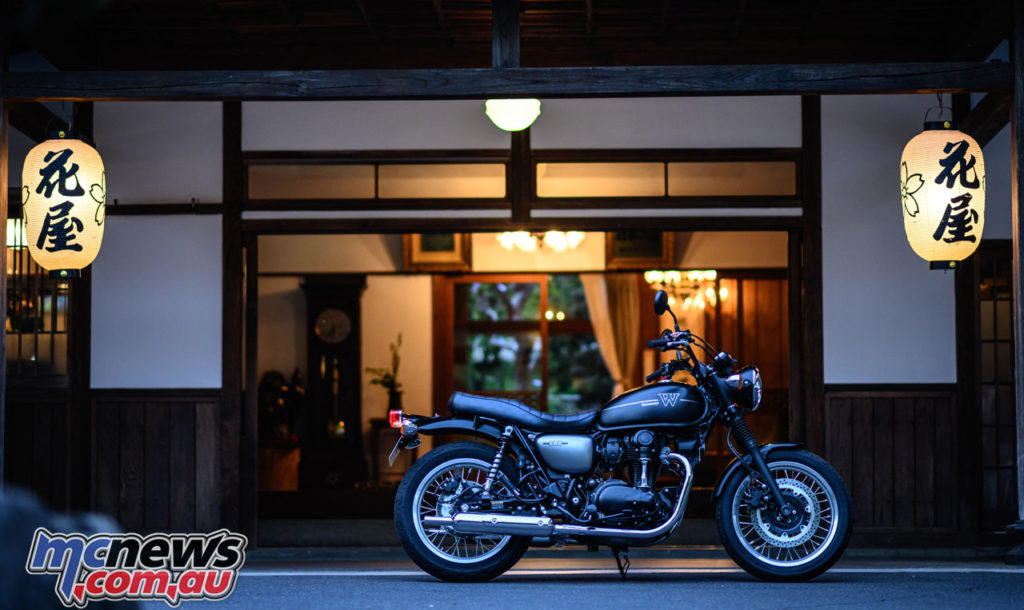
Bikes in the class shouldn’t be evaluated on performance, or handling – it’s how it makes you feel; do you feel pride in ownership, does it make you smile every time you open the garage door? Every time I rode the new W800 I smiled, even on day three I wasn’t bored of the easy-to-ride Kawasaki.
Grab your open face helmet, leather jacket, protective jeans and take the W800 for a test ride. Don’t go chasing the revs and performance, relax, turn off your phone and life worries, just enjoy the simplicity and charm the W800 delivers.
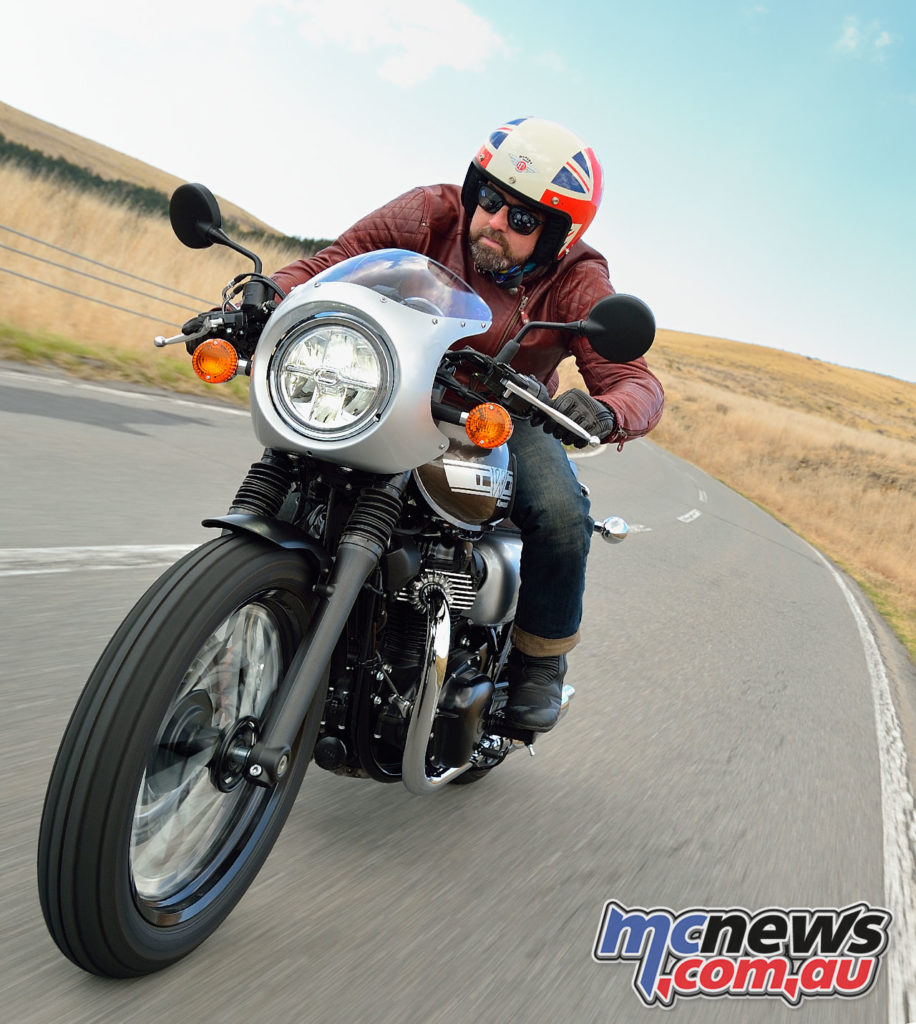
Kawasaki W800 Specifications
| Engine Type | Air-cooled, 4-stroke Vertical Twin |
| Displacement | 773 cm³ |
| Bore x Stroke | 77.0 x 83.0 mm |
| Compression Ratio | 8.4:1 |
| Valve System | SOHC 8 valve, Bevel Drive |
| Fuel System | DFI 2 X 34 mm with Sub Throttles |
| Ignition | TCBI with Digital Advance |
| Starting | Electric |
| Transmission | 5-speed with Positive Neutral Finder, A&S Clutch |
| Suspension – front | 41 mm telescopic fork |
| Suspension – rear | Twin rear shock with 5-way adjustable spring preload |
| Wheel travel – f/r | 130/107 mm |
| Ground Clearance | 130 mm |
| Brakes – front | 320 mm diameter single disc with twin piston caliper, ABS |
| Brakes – rear | 270 mm diameter single disc with twin-piston caliper, ABS |
| Wheel Size Front / Rear | 2.50 – 18.0 / 3.00 – 18.0 |
| Tyre Size Front / Rear | 100/90-18M/C 57H / 130/80-18M/C 66H |
| L x W x H | 2,135 mm x 825 mm x 1,135 mm |
| Wheelbase | 1,465 mm |
| Seat height | 790 mm |
| Fuel capacity | 15 litres |
| Curb Mass | 223 kg |
| Max Power | 35kW @ 6,000 rpm |
| Max Torque | 62.9 N.m @ 4,800 rpm |
| Colour/s | Metallic Magnesium Gray with Galaxy Silver |
| Warranty | 24 Months Unlimited Kilometres |
| Engine Type | Air-cooled, 4-stroke Vertical Twin |
| Displacement | 773 cm³ |
| Bore x Stroke | 77.0 x 83.0 mm |
| Compression Ratio | 8.4:1 |
| Valve System | SOHC 8 valve, Bevel Drive |
| Fuel System | DFI 2 X 34 mm with Sub Throttles |
| Ignition | TCBI with Digital Advance |
| Starting | Electric |
| Transmission | 5-speed with Positive Neutral Finder |
| Suspension – front | 39 mm telescopic fork |
| Suspension – rear | Twin rear shock with 5-way adjustable spring preload |
| Wheel travel – f/r | 130/105 mm |
| Ground Clearance | 125 mm |
| Brakes – front | 300 mm Single semi floating disc with twin piston calliper |
| Brakes – rear | Drum, 160 mm |
| Wheel Size Front / Rear | 2.15-19.0 2.75-18.0 |
| Tyre Size Front / Rear | 100/90-19M/C 57H 130/80-18M/C 66H |
| L x W x H | 2,190 mm x 790 mm x 1,075 mm |
| Wheelbase | 1,465 mm |
| Seat height | 790 mm |
| Fuel capacity | 14 litres |
| Curb Mass | 217 kg |
| Max Power | 35kW @ 6,500 rpm |
| Max Torque | 60.0 N.m @ 2,500 rpm |
| Colour/s | Ebony |
| Warranty | 24 Months Unlimited Kilometres |























